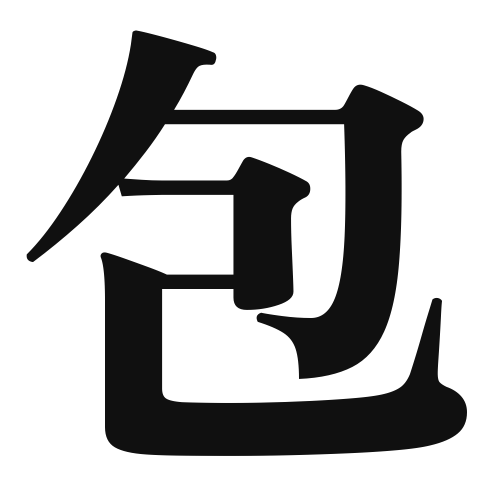1. Overview of Meaning
The kanji “包” (pronounced “hō” in Japanese) means “to wrap” or “to pack.” It conveys the idea of enclosing something within a covering or container.
2. Formation and Radical
Formation of the Kanji: The kanji “包” is a pictogram that represents the concept of wrapping. It visually depicts the action of enclosing something.
Radical: The radical for “包” is “包” itself, which is used to indicate meanings related to wrapping or enclosing.
3. Examples of Usage
Common Words and Phrases: Some frequently used words that include “包” are:
- 包み (つつみ, tsutsumi) – a wrap or package
- 包装 (ほうそう, hōsō) – packaging
- 包帯 (ほうたい, hōtai) – bandage
Example Sentences in Daily Conversation:
- このお菓子は包んで持って帰ります。 (このおかしはつつんでもってかえります。) – I will wrap this candy and take it home.
- 新しい包装のデザインが気に入っています。 (あたらしいほうそうのデザインがきにいっています。) – I like the design of the new packaging.
4. Synonyms and Antonyms
Similar Kanji: A kanji with a similar meaning is “覆” (おおう, ōu), which means “to cover” but often implies a more protective or concealing action.
Antonyms: A kanji with an opposite meaning is “開” (ひらく, hiraku), which means “to open” or “to uncover.”
5. Cultural and Historical Background
Relation to Japanese Culture: The concept of wrapping is significant in Japanese culture, especially in the context of gift-giving and presentation. The art of wrapping, known as “furoshiki,” is a traditional method of wrapping items using cloth.
Proverbs and Idioms: One common saying is “包み隠さず” (つつみかくさず, tsutsumi kakusazu), which means “to not hide anything,” emphasizing transparency and honesty.
